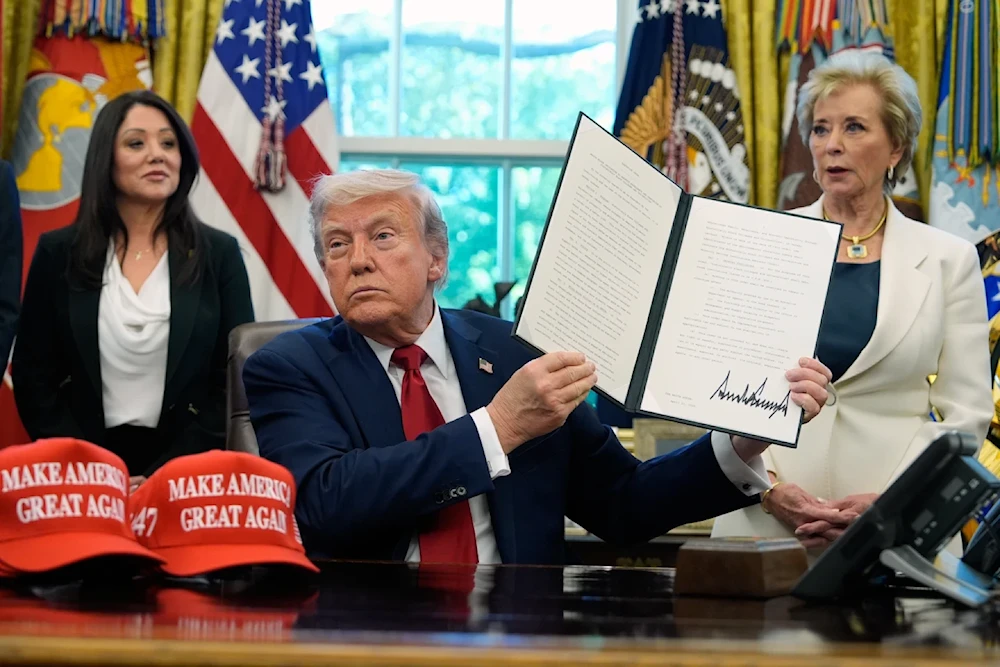Trump's approval rating worst among post-WWII presidents
Polls increasingly show Americans divided over Trump's tariffs, executive orders, and economic leadership.
-
 US President Donald Trump holds a signed executive order in the Oval Office of the White House, on Wednesday, April 23, 2025, in Washington. (AP)
US President Donald Trump holds a signed executive order in the Oval Office of the White House, on Wednesday, April 23, 2025, in Washington. (AP)
US President Donald Trump recorded an average approval rating of 45% during the first quarter of his second term, according to Gallup polling data. This figure ranks among the lowest for post-World War II presidents, trailing Democrat predecessors like Barack Obama and Joe Biden.
Gallup's analysis of polls conducted between January 20 and April 14 shows Trump's 45% approval rating falls well below the postwar presidential average of 59%. During the same period in office, Barack Obama garnered 63% approval in 2009, while Joe Biden held 56% in 2021. Trump, a Republican, performed marginally better than in his first term, when his approval rating stood at 41% at the same point.
Historically, John F. Kennedy led with 74% in 1961, followed by Dwight Eisenhower at 71% in 1953. Other notable figures include Jimmy Carter with 69% in 1977 and Ronald Reagan at 60% in 1981.
They were followed by George H.W. Bush in 1989 with 57%, Joe Biden in 2021 at 56%, and Bill Clinton with 55% in 1993.
Polls reflect mixed public opinion on tariffs and executive orders
Despite lagging behind other Republican and Democratic presidents in approval ratings, a more recent survey by JL Partners showed a slightly more favorable outlook. The poll, conducted between April 10 and 14 among 1,002 registered voters, gave Trump a 48% approval rating, with 42% disapproving. The margin of error was +/- 3.4%.
Since beginning his second term on January 20, Trump has enacted a range of executive orders, including declaring a national emergency over illegal migration and directing federal agencies to scale back diversity, equity, and inclusion (DEI) initiatives.
A key component of his policy agenda was the imposition of new tariffs, which Trump introduced on April 2, calling the date "Liberation Day". While some tariffs were rolled back, duties of up to 245% on Chinese imports remain, reinforcing his stance against free trade.
What political analysts say about Trump’s standing
Gallup also reported that 44% of US adults expressed confidence in Trump’s handling of the economy, while 55% had little or no trust in his economic leadership. Despite this, Trump ranks highest among political leaders in terms of public trust on economic issues.
Commenting on the political landscape, Thomas Gift, associate professor of political science at University College London, told Newsweek, "There's a widespread assumption, especially among progressive elites in major cities, that tariffs are politically damaging for Trump. But that may reflect more of an echo chamber than the national mood. A considerable number of Americans are four-square behind Trump's tariffs. That not only includes MAGA Republicans, but also populists on the left who are cheering on Trump's attacks on free trade."

 3 Min Read
3 Min Read








